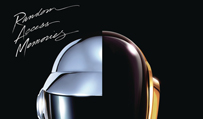As his extensive television credits verify, Keith LuBrant has placed his music in over 300 television shows on networks including NBC, CBS, FOX, MTV, VH-1, MTV, HBO, A&E, Bravo, Discovery, TLC and E! The recent Lifetime Movie, Lizzie Borden Took an Axe, featured LuBrant’s song, “Dangerous Mind.”
LuBrant’s hometown, Turnersville, NJ, is not a media center, but his connections to the decision makers in Los Angeles are strong. His aptitude for creating on a tight schedule is one considerable factor. “If the deadline is in two days and you can’t get the music to them in that time frame, what are the odds of them hitting you back?” says LuBrant.
The songwriter/composer, whose main instrument is guitar, has per-formed in a variety of bands. “At some point you get older. When the club owner asks, ‘Can you bring 100 people on Wednesday night at a quarter to 12?’ maybe it’s time to rethink. And that’s what got me into music licensing.”
The learning curve, LuBrant says, was vital to formulating television ready tracks and to making the connections to place them. “I really had to educate myself. I went on the Internet, and did some stuff on my own and I reached out to some contacts,” he recalls.
When he saw ads for TAXI, the independent A&R company, he was initially skeptical. “It’s engrained in music people that if someone asks you for money, it’s a scam,” he recalls. He soon found out differently. “TAXI helped me focus on my production, and how to get my music together. After I joined TAXI I knew that I could do it.”
He advises songwriters interested in this process to spend time watching television and observing how the music fits in to the overall scenario. “You have to get out of the songwriting mode and into TV.”
In expanding into the television medium, LuBrant says he also had to disregard the formulas of song structures. “I was more into the song aspect––not what would work in a scene on TV,” he admits. “When I first started I would compose two- to two-and-a-half-minute mini-songs with verses and choruses. These were not great for TV because they had no edit points.”
He says that the endings should be emphatic. “They never use a fadeout. They want a button ending, a one-note sustained chord, or a quick staccato thing, but a definitive ending. These are called ‘stingers.’”
Recording alternate versions of the same cue is also prudent, he says. “For a rock thing, I might first have a mix with lead guitar, rhythm, bass and drums. Then I do a second mix with the lead guitar taken out. This is called the ‘bed mix.’ Then a drum and bass version that they might use with dialog because there is no busy-ness. I also gave them stingers- endings with the full band. That gives the music editor the flexibility to mix. I’ve had music on shows where they have taken pieces of each mix.”
At this career juncture, LuBrant says that the production companies and the shows generally call on him directly. “Now my cues go right into the edit bays for selection, so there is a much greater chance of them getting placed.” And he observes that sheer repetition has assisted him in knowing what will work and what won’t. “My bread and butter is pop-rock and metal. I’m a guitarist and I have a gazillion amps and guitars, but 99 percent of my stuff is through amp simulators and plug-ins.”
While LuBrant might receive some upfront sync fees for custom writing, the bulk of his income is on the back end from performing rights payments. “For example, I had a song on Keeping Up with the Kardashians. I got paid every time it played, then that show started playing on another channel, so there was income from that. Then it went international, and was picked up by XM satellite––and that’s just one track. Seeing the tracks expand is amazing. You don’t think about it when you’re writing music, but when you see the BMI checks, it’s cool.”
Visit http://kblmedia.com















